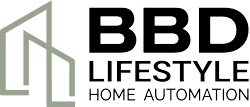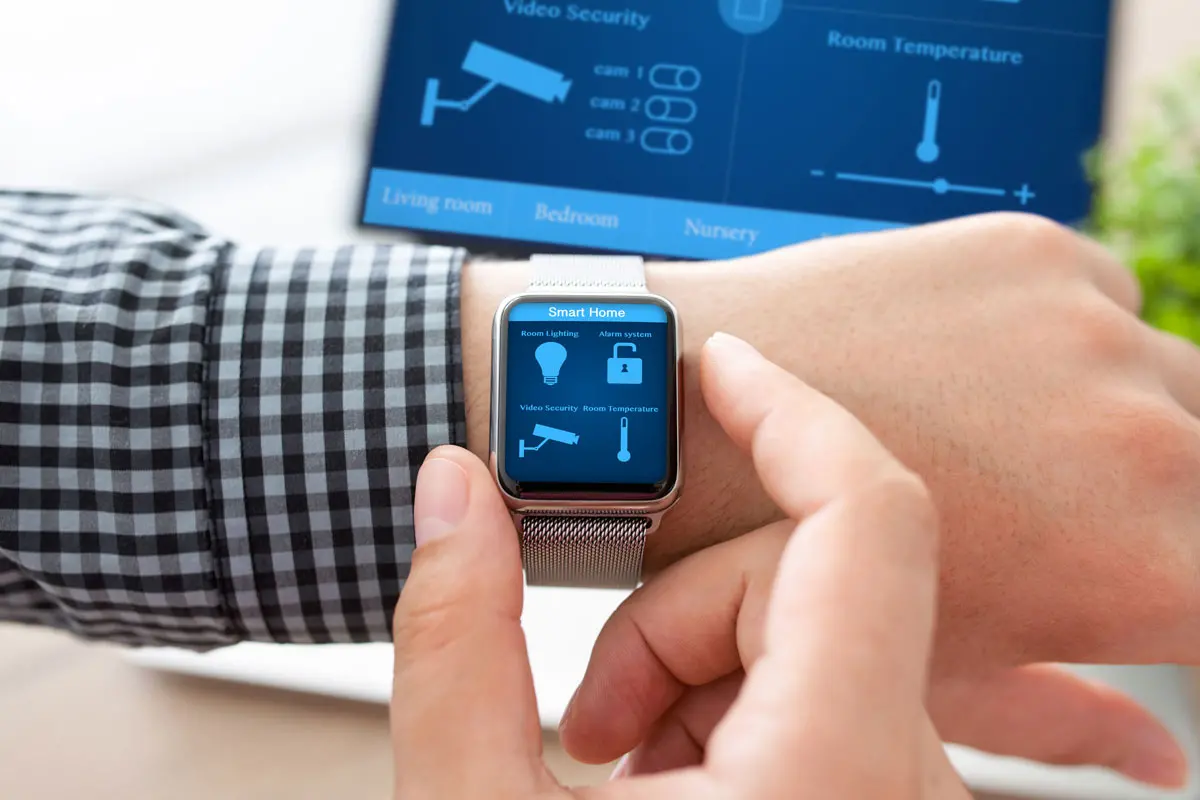Smart home automation is rapidly gaining recognition amidst consumers around the world.
The craze these days is focused on technologies that make everyday living comfortable, convenient, and easy. Automation is one of the fastest growing technologies, demonstrating advances in innovation and supersonic speed. The latest is Domotics technology which means information technology for the home which involves the mechanization of thermostats, safety, temperature controls and appliances.
The introduction of the Internet of Things (IoT) a system of interrelated computing devices, mechanical and digital machines, and objects that have unique identifiers (UIDs) and the ability to transfer data over a network without requiring human-to-human or human-to-computer interaction has revolutionized smart home automation. It offers automatic control of electronic and electrical devices in homes. Users access these devices through wireless communication.
Appliance manufacturers are using this cutting edge technology on appliances to meet the growing demand for efficient and affordable appliances. As a result, the global demand for intelligent home automation is flooded with revolutionary home systems.
One of the main areas that has been explored for smart homes is related to improving health. Several IoT smart home products have been developed that aim to monitor the status of the environment in the house. This includes, for example, monitoring the condition of the air across a number of categories – humidity, temperature, dust, CO2 etc. This information is then transmitted to a control interface where the user (the home owner or house occupier) can examine it and take appropriate action. Alternatively, this can be linked into other systems whereby automatic action can be taken to bring conditions back to the desired level, such as automatically turning air cooling or filtering systems on.
Other appliance-based solutions that are on the market include fridges that can monitor the status of food, checking for spoilage or similar, while automated cleaning can help reduce dust and dirt in the house.
The concept of the smart home is that an automation system can run systems throughout the house.
The range of possible options is substantial and includes environmental systems (lighting, heating, temperature control, etc.), entertainment systems, personal devices and home security systems. The concept of producing appliances, environments that are automated is to save the homeowner time and money. An example of its functionality would be to turn up the thermostat automatically when you arrive home, or ask the entertainment system to play a particular song.
But when we talk about home automation and smart homes, the technology goes one step further. Instead of operating individual devices independently, a smart home integrates multiple subsystems controlled by one main home controller. This main controller is similar to the field controller of the home automation system, which receives information from all devices in the house, issues commands and controls everything.
These controllers can run complex software, allowing them to execute individual or multiple actions based on various events. These events can be presented in different ways, but they can be divided into two categories: scheduled and triggered..
Scheduled events
Most home automation systems incorporate an astronomical clock. By knowing the geographical location of a home, the astronomical clock is kept informed of changes in sunrise and sunset schedules and synchronizes your clock on the Internet to maintain it accuracy based the sun’s schedule.. With this feature, the home can perform tasks at specific times each day, such as raising curtains in the living room or adjusting thermostat based on sunrise/sunset, and turning on outside lights as the day comes to an end.
Triggered events
Triggered events are actions that the automation system performs based on something that happens: a trigger. Common triggers include:
- A button press: “When I press this button, perform this action”.
- A door opening: “When this door opens, turn on the light”.
- Movement detected: “If there is no movement for 5 minutes, turn off this light”.
- A sensor tripping: “If the temperature in this room exceeds 80 degrees, send me a message”.
- Geo-fences: “When you receive a signal from my phone, turn on my favorite music and turn on the lights when I get close to home.”
By combining a variety of scheduled and triggered events, there is almost nothing that a smart home cannot do. Combined with conditional logic (if it is, then this, if not this), the system becomes even more powerful. A possible command could be: IF I press this button AND the time is between midnight and 5 am, then the light is on at 50%, ELSE turns on the light at 90%. Machine learning has added an extra layer of automation: smart thermostats learn your family’s habits and adapt automatically.
Contact us for a FREE Quote on your Window Treatment and Smart Home Automation project.
Serving: Tampa Bay, St. Petersburg, Sarasota, FL.
“Smart Homes” integrate a variety of subsystems. The most common elements of a home automation system include:
Lighting
- Turn on a single light, a group of lights or all the lights.
- The lights can be adjusted to the desired level in each location.
- Intelligent switches / dimmers are available to control virtually any type of lighting load.
- Lighting control can be integrated into virtually any home.
Shades/Blinds
- Replace your existing manual blinds with motorized models that can respond to the controls of your automation system.
HVAC (Heating, Ventilation, Air Conditioning).
- Save energy by automatically increasing or decreasing temperature set points to avoid heating or cooling an empty house.
- HVAC Control are the standard installation in every home these days.
Security
- Besides notifying a monitoring company and alerting authorities, a security system can be integrated as part of a home automation system.
- Video doorbells show you who’s on the porch — and record those events.
Irrigation
- Control your home’s landscape irrigation system.
Pool/Spa
- Pre-heat your pool or spa before you get home so that the water is ready when you arrive.
- Be notified if there is some failure in your pump system so you don’t return home to find your own Black Lagoon.
Entertainment
- Get your party started by playing your favorite music playlist in every room of the home with a single voice command.
- Be welcomed home every night with your favorite wind-down music.
With a home automation system in your home, you can perform elaborate functions from across the house or from the other side of the world via the Internet. From your mobile device, one command can disarm your alarm, lower the blinds, turn on the fireplace, dim the lights, heat the spa, and turn on music.
The security aspect
Linking the security systems into IoT has made homes more secure. One of the most popular way this has been done is through using IoT enabled cameras in or around a house that enable a picture or video feed to be sent so that the homeowner is able to check on the situation when they are away or when they are in another part of the property. Often these types of devices have multiple features integrated into them, such as automated motion sensors, sound detection, and event-triggered video recording and so on.
While cutting edge of technology often gets the headlines, in many homes there is still substantial progress to be made with the first and second generation of systems. It is often entertainment-linked systems that generate the most media coverage, with the various personal home assistants – such as Amazon’s Echo, Google Home, Sonos One, Apple HomePod and others – having been particularly popular. With the growing and accelerating roll out and uptake by customers of IoT smart home tools and solutions, demand for additional services or tools is likely to increase. The sheer range of potential within the smart home will ensure that IoT within the house will continue to develop in the years ahead.
Overview of the Smart Home Automation Market
The global market for smart home automation is anticipated to witness impressive growth in the forthcoming years. Remote control living and high demand for automation will remain the major demand of users opting for the advanced products available in the market. Disposable income and awareness in the innovations in technology can create major business opportunities for the top market players like Honeywell International Inc.; Lutron Electronics Co., Inc.; Legrand SA; Schneider Electric; and others. High demand for heating, ventilation, and air conditioning (HVAC) systems, smart kitchen, smart security, and energy management can propel the demand for the global market in near future.
The integration of the internet is one of the major factors responsible for the innovations taking place in smart home automation technology. Arrival of smart thermostat technologies such as Z-Wave, C-Bus, ZigBee, KNX, EnOcean, and others has simplified the adoption and implementation of wireless technology. This technology plays a crucial role in the insanely increasing popularity of home automation. Major companies in the market are keen in investing heavily in research and development along with business collaborations. Growing demand for home entertainment, security, and energy management can be considered as a vital sign of growth for this industry.
A myriad of brand new products are expected to be launched in the smart home automation market in the next few years. Most of these products will heavily rely on Internet of things, artificial intelligence, and smart sensor technology. The best thing about automated smart home products is the way they allow the users to have total control their preferred product to function.





